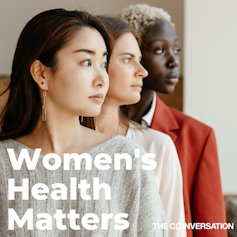Medical terminology evolves alongside our understanding of medicine. As time goes by, new terms are adopted while others are abandoned. In midwifery, there should always be a strong emphasis on the language we use, particularly in pregnancy.
In 2020, the Royal College of Midwives launched an initiative to discover the impact language has on women. The aim of the Re:Birth project was to find language around pregnancy that could be understood both by people delivering maternity care and those receiving it.
It was the first project of its kind to consult the maternity community (including new mothers and healthcare professionals) directly on their preferred language to describe labour and birth. The findings of the project supported the fact that many women were less concerned about the way their baby was born but with whether they had a positive experience and felt safe and listened to.
Last year, the Royal College of Midwives published a report outlining their findings and a new pocket guide is being issued to midwives this year.

This article is part of Women’s Health Matters, a series about the health and wellbeing of women and girls around the world. From menopause to miscarriage, pleasure to pain the articles in this series will delve into the full spectrum of women’s health issues to provide valuable information, insights and resources for women of all ages.
You may be interested in:
Spain is the egg donation capital of Europe – here’s what it’s like to be a donor
‘Dirty red’: how periods have been stigmatised through history to the modern day
The orgasm gap and why women climax less than men
Here are six maternity terms you are now unlikely to hear:
1. Delivery
The term “birth” has now been accepted, rather than the term “delivery”, which has commonly been used in the past. Women and health professionals also wanted accurate, specific descriptions as far as possible to describe what had happened in the labour and birth. For example, “birth with forceps” or “birth with ventouse”. This also includes “caesarean birth”.
2. Low risk / high risk
“Universal care needs” is being used rather than “low risk”. While “additional care needs” is now the preferred term for “high risk”. The word “risk” is associated with uncertainty and it is vital that women feel comfortable and confident during their pregnancy.
3. Normal
“Normal birth” is a term that has long been used by midwives and other healthcare professionals to describe a spontaneous, physiological vaginal delivery. But what counts as “normal”? Does this label someone as “abnormal” if they did not experience what we classify as “normal” birth?
The new preferred term, “spontaneous vaginal birth”, covers spontaneous labour without significant medical interventions such as induction and oxytocin. It also covers spontaneous vaginal birth without the need for instruments, such as forceps.
4. Emergency caesarean
The new overarching term for an operative caesarean section is “caesarean birth”. This replaces the word “emergency”, which is a term that may cause alarm. The term “unplanned caesarean birth” is now preferred over “emergency caesarean”.
5. Incompetent cervix
“Incompetent cervix” has connotations of personal failure. So, the preferred term is now “cervical insufficiency”.
6. Failure / failed
During the Re:Birth project, women were keen to share how terms such as “failure to progress” can contribute to feelings of failure and trauma. “Delayed progress in labour” or “slow labour” are now preferred terms.
We can apply the same logic to terms such as “failed induction” or “failed homebirth”. “Induction of labour, with delay and followed by operative birth” and “transfer in during planned homebirth” are favoured, respectively.

Language which infantalises pregnant women, such as “good girl” or “you are allowed/not allowed to” should also be avoided, as should language which has connotations of blame. Examples of this include “poor maternal effort” and “refused”.
During pregnancy and birth, which is a vulnerable time for many, the role of the midwife is to empower women and to value their autonomy over their care decisions.
The Nursing and Midwifery Council’s standards of proficiency for midwives document states that midwives provide universal care for all women and new-born infants. Midwives support physical, psychological, social, cultural and spiritual safety. The emphasis on psychological care is clear, therefore, with language having a profound impact on wellbeing.
Healthcare professionals must acknowledge that the language we use is an important part of the care we provide. Improved psychological safety and wellbeing is closely linked to improved safety, positive outcomes and future experiences. Language matters.

